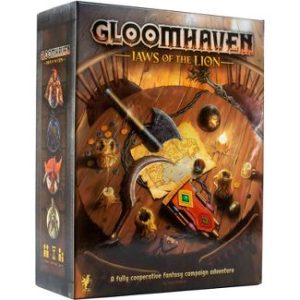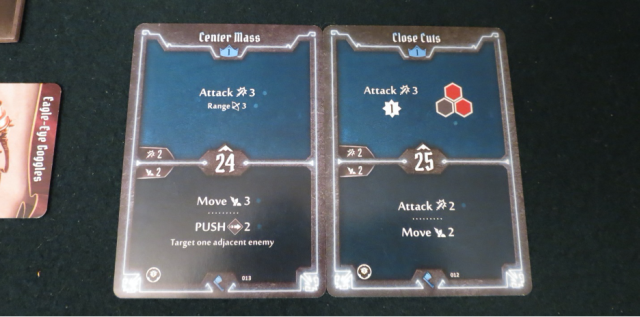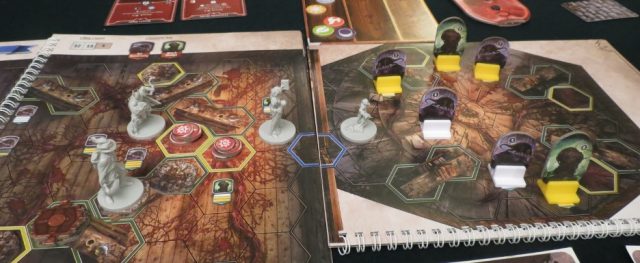Welcome to Ars Cardboard, our weekend look at tabletop games! Check out our complete board gaming coverage at cardboard.arstechnica.com.
Theres a reason Gloomhaven (read our 2017 review) is so popular. Theres also a reason why half of my friends who own a copy have opened it once, stared in despair at the contents within, and loosed a timid box-fart as they reassembled the package. “More is better!” can be true, especially when it comes to fighting your way through a dungeon. “More” means more monsters, more classes, more loot—even additional varieties of stonework decorating the corridors. It also happens to mean, you know, more. More to learn. More to remember. More to sort and keep sorted. Gloomhaven basically defines "more."

But now theres Gloomhaven: Jaws of the Lion, the largest box to ever feel small. With only four classes, a single (mostly) linear campaign, and some clever quality-of-life improvements, this is Isaac Childress attempt to make a Gloomhaven for the rest of us. (Or the rest of you, since I played Gloomhaven until I was well and truly sick of it.)
How does Childres go about streamlining a game so monolithic that it once bestowed sentience upon a chimp? The answer is: easier passage into the game systems, fewer components, and a more focused quest line. Lets take those in turn, because theres more to each than you might think, including some drawbacks you may want to consider if youre already curious about diving into Gloomhaven.
Game details
Designer: Isaac Childres
Publisher: Cephalofair Games
Players: 1-4
Age: 12+
Playing time: 30-120 minutes
Price: $45 (Buy on Amazon)
Tutorials get a bad rap. Im speaking mostly of video games, where tutorials have been a staple ever since we collectively decided we werent going to read the manual anymore. The problem is twofold: either the game belabors the stuff we already know, like how to look around and click to shoot, or it fails to really dissect all the little subsystems that make the game purr. A good tutorial walks a tightrope between talking down to us like weve been living in a cave for the past fifteen years and assuming we hold a PhD in Interpreting Game Design Intentions. Yes, I know how to move the mouse. No, I dont know why my king is in love with his biological sister. Meet me halfway here, game.
Jaws of the Lion is one of a few modern board games to try a tutorial. For the most part, this is a success. The original Gloomhaven didnt exactly throw its players into whitewater rapids, but “deep end” wouldnt be an overstatement. Here, the focus is squarely on the good stuff: the games novel card system rather than, say, the fact that you lose hit points until you fall over.
Every turn is about picking two of your heros cards. These cards determine the order youll move in, both relative to your fellow adventurers and the enemies crowding the table, as well as the moves and attacks youll deploy. The rub is that youre required to use the top half of one card, usually an attack or a spell, and the bottom half of the other card, which lets you reposition yourself on the board. That might sound breezy, but the game quickly teaches you that spent cards are discarded, narrowing your options until youre forced to take a breather.

Each of these concepts is taught over the course of the first few scenarios. First, you learn how to pair cards to move and attack, then how to navigate your environment, manage the decks that regulate enemy actions, charge up elements to boost your moves, and finally how to square off against a miniboss. New cards and concepts trickle out with each fight, adding options without swamping you. Where the first scenario functions almost like punching those dummies that fall over only to pop back up into your face, by the sixth scenario youll have a solid handle on nearly everything youll need to know to play Gloomhaven.
Heres the good news: it works. After answering hundreds of rules questions on the BoardGameGeek forums, Childres understands which concepts are second nature and which require reinforcement. The flipside is that this isnt only a tutorial for the games rules. Its also a tutorial for how Jaws of the Lion ought to be played. As in, by a single consistent group. Ideally one that happens to be patient enough for the games particularities, like choosing when to rest and who will breach that next door. Oh, and you should be fine playing the same character for a very long time.

That last point is one of Jaws of the Lions biggest departures from Gloomhavens big box, and it bears some explanation. At first glance, this is standard save-the-city fare. Youre big damn heroes, there are big damn monsters, and we all know the rest. What sets the game apart from its kin isnt only its card system, but also how it approaches its characters, all of which are refreshingly imaginative.
My character was the Hatchet. Tall, furry, and horned, the Hatchet seems like your standard melee bruiser. Except he isnt. Hes a ranged warrior who throws hand-axes, tomahawks, cleavers, mattocks, and other hefty bladed implements whose names Ive forgotten, often striking multiple targets in the same turn. More importantly, he strikes hard, like hes dealing melee damage instead of flinging stuff around the room.
Over time, the Hatchet grows even more interesting. He has a favored blade that can be stuck into a large monster for bonus damage and then cause even more bonus damage every turn until the monster dies and the Hatchet reclaims his favorite. He also has a supply drop, which is akin to throwing a healing crate into an opponents hRead More – Source
[contf] [contfnew] 
arstechnica
[contfnewc] [contfnewc]







